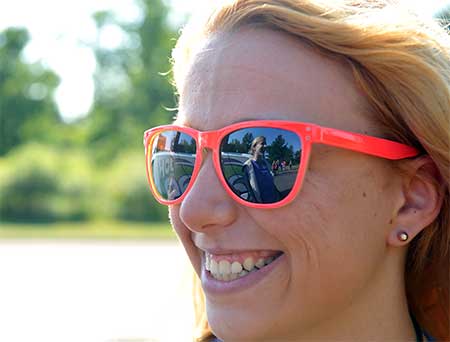 If your idea of wellness includes a deep tan, here’s what you need to be prepared for: wrinkles, age spots and higher risk for skin cancer.
If your idea of wellness includes a deep tan, here’s what you need to be prepared for: wrinkles, age spots and higher risk for skin cancer.
That’s the unfortunate tomorrow for basking in the sun today.
Your skin changes with age, according to the National Institute on Aging. It becomes thinner, loses fat and no longer looks as smooth as it once did. Over time, skin begins to wrinkle as the sun’s ultraviolet (UV) rays reduce elasticity and gravity causes skin to sag and wrinkle.
Age spots or sunspots are flat and brown, bigger than freckles. Although usually harmless, they can detract from appearance.
Be proactive to avoid skin cancer
“Unprotected sun exposure, especially as a child and young adult, can be an important cause of skin cancer. In addition, tanning beds are playing a large role in the epidemic increase of skin cancer,” said Dr. Stella Patten, a Marshfield Clinic dermatologist.
Of the three main types of skin cancer, the most common is basal cell carcinoma followed by squamous cell carcinoma at No. 2. Both tend to occur most often in sun-exposed skin, grow slowly and rarely spread elsewhere in the body. The least common and most serious is malignant melanoma.
“Melanoma can occur anywhere on the skin surface, not just sun-exposed skin,” Patten said. “Melanoma is the most dangerous of the skin cancers because it tends to spread fast and will become potentially fatal if not caught early.”
Patten sees the long-term effects when people come to her for help. As a cosmetic dermatologist, she offers potential treatments, but protecting skin from the sun is key to preventing future problems.
“There is no way to get a safe tan because tanned skin is damaged skin,” Patten said. “However, the self-action, self-tanner products purchased over the counter or sprayed on by some salons are a safe way to look tanned without damaging the skin.”
Treatments help with skin care
Once damage has been done, dermatologists in some cases can perform Intense Pulsed Light therapy, an optimized-light photo rejuvenation to clear undesirable pigment such as freckles, sun spots, redness caused by blood vessels, and spider veins.
Chemical peeling is an option that involves applying a chemical solution causing top layers of skin to separate and peel off. This leaves skin that is smoother, less wrinkled and more even in color.
6 tips to protect skin from the sun
- “Limit your time in the sun, especially between 10 a.m. and 4 p.m. when the sun’s rays are strongest,” Patten said.
- Remember the sun’s damaging rays can pass through clouds and car windows.
- Use a generous amount of sunblock with a sun protection factor (SPF) of at least 30. Reapply often, especially if sweating or swimming.
- Make sure the sunblock says “broad spectrum” on the label, so it covers both UVA and UVB rays. UVB rays cause sunburns but UVA rays penetrate deeper into the skin, causing unseen damage.
- Wear protective clothing, including a hat with a wide brim that can shade your neck, ears, eyes and head. Look for sunglasses that block 99-100 percent of the sun’s rays and clothing with SPF fabrics, now available in most clothing stores.
- Stay away from sunlamps and tanning beds.
If you do get a sunburn, Care My Way® may be able to help. Download the app to get started.

